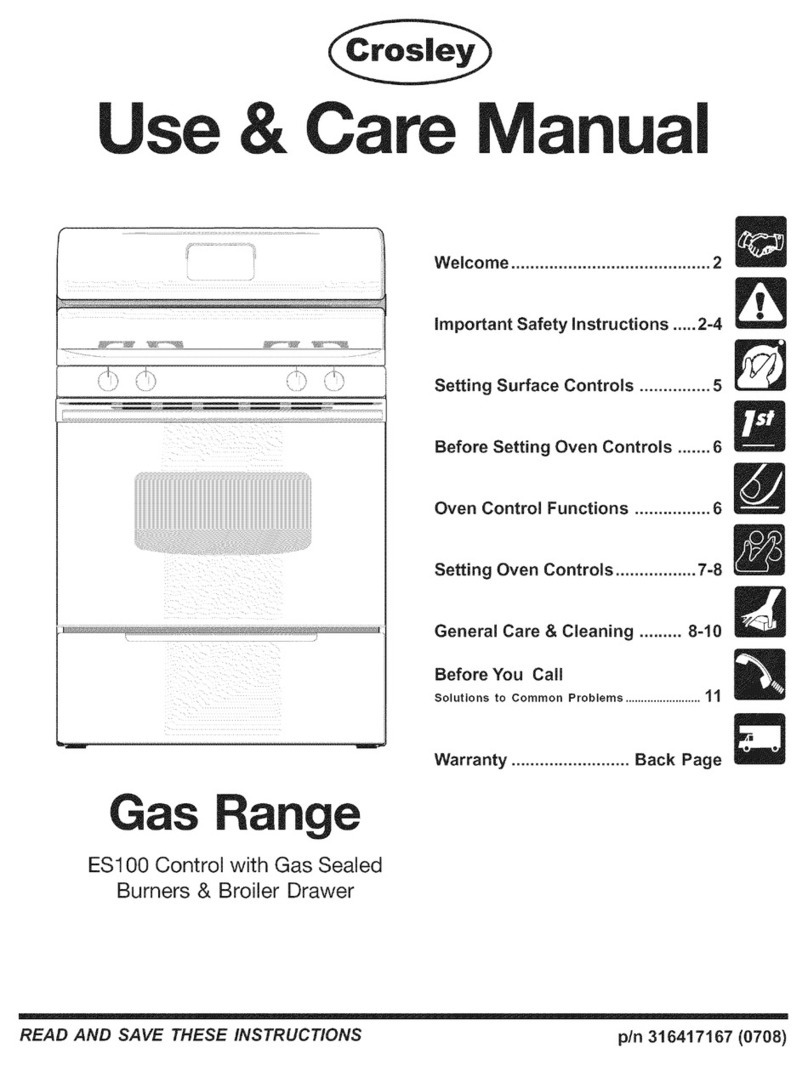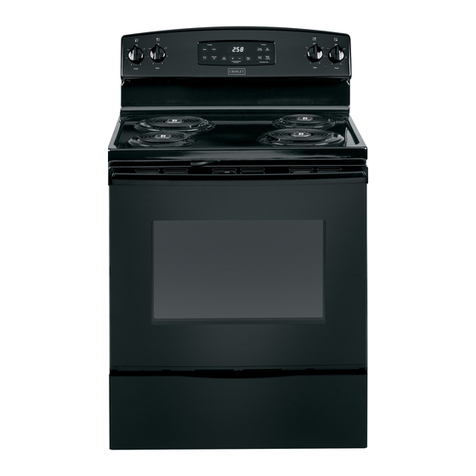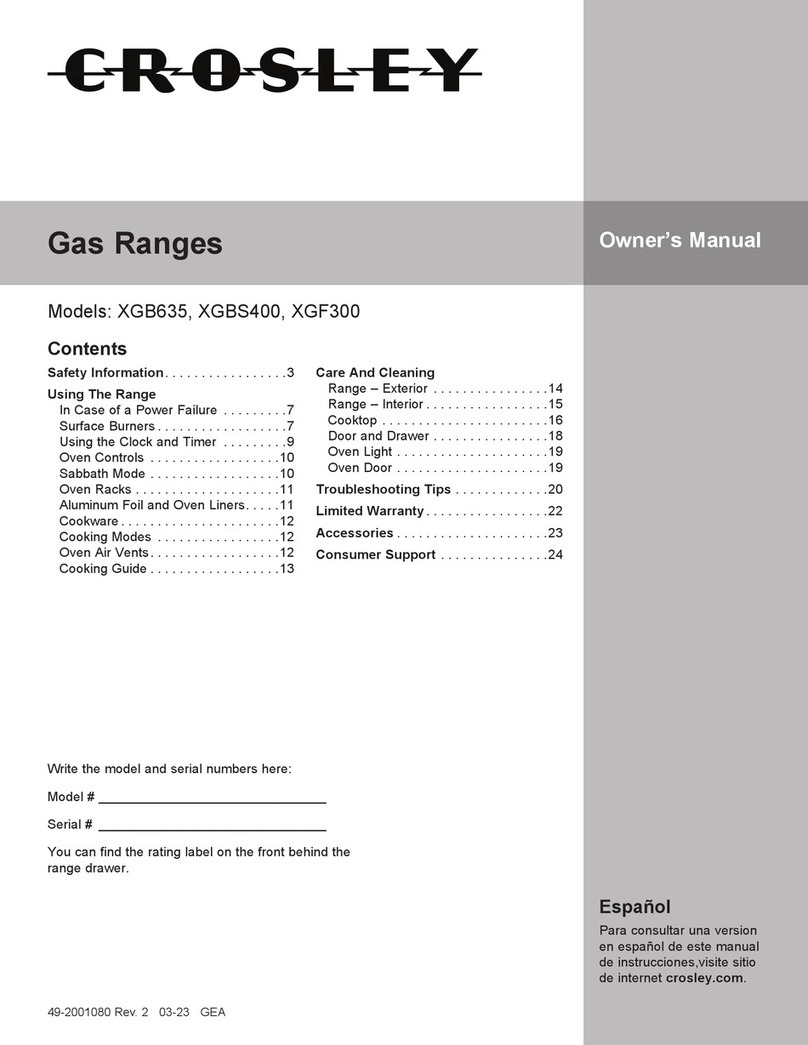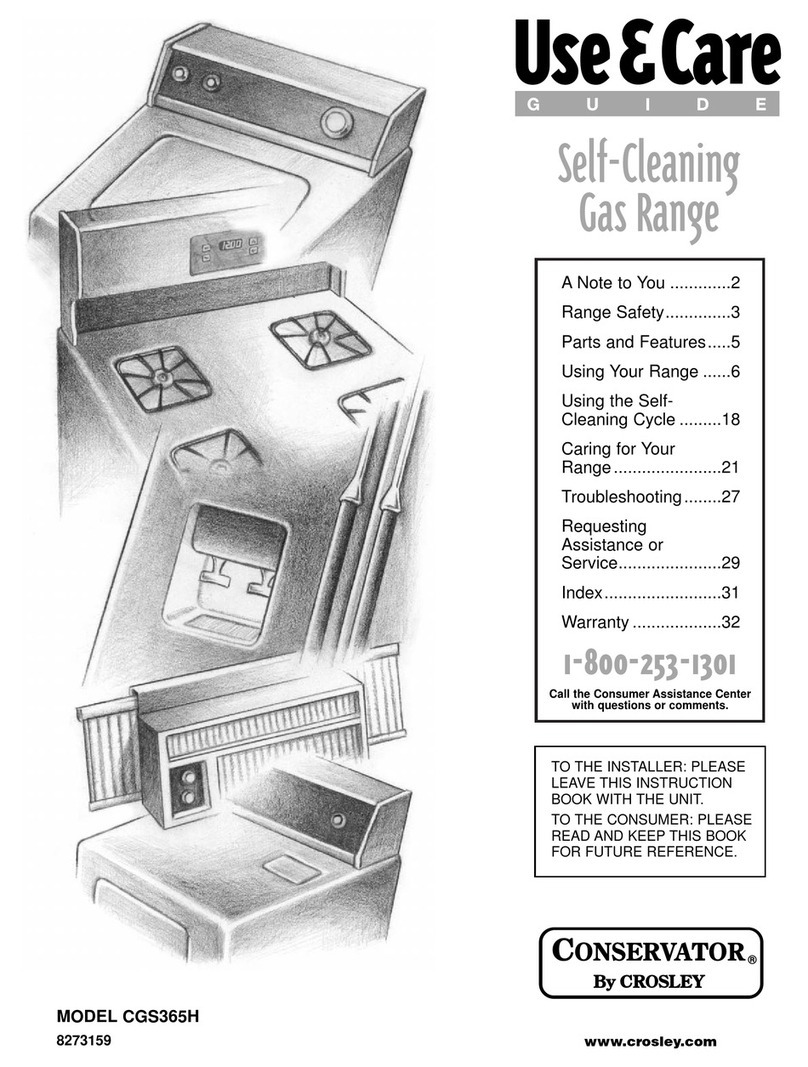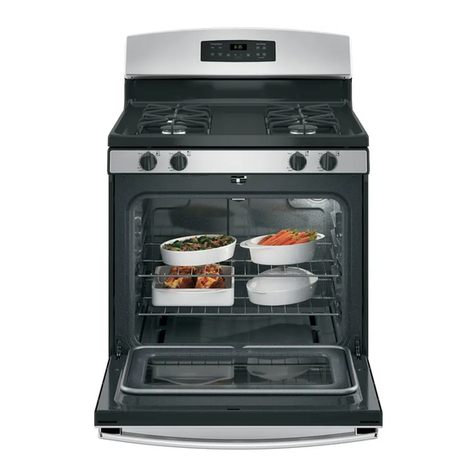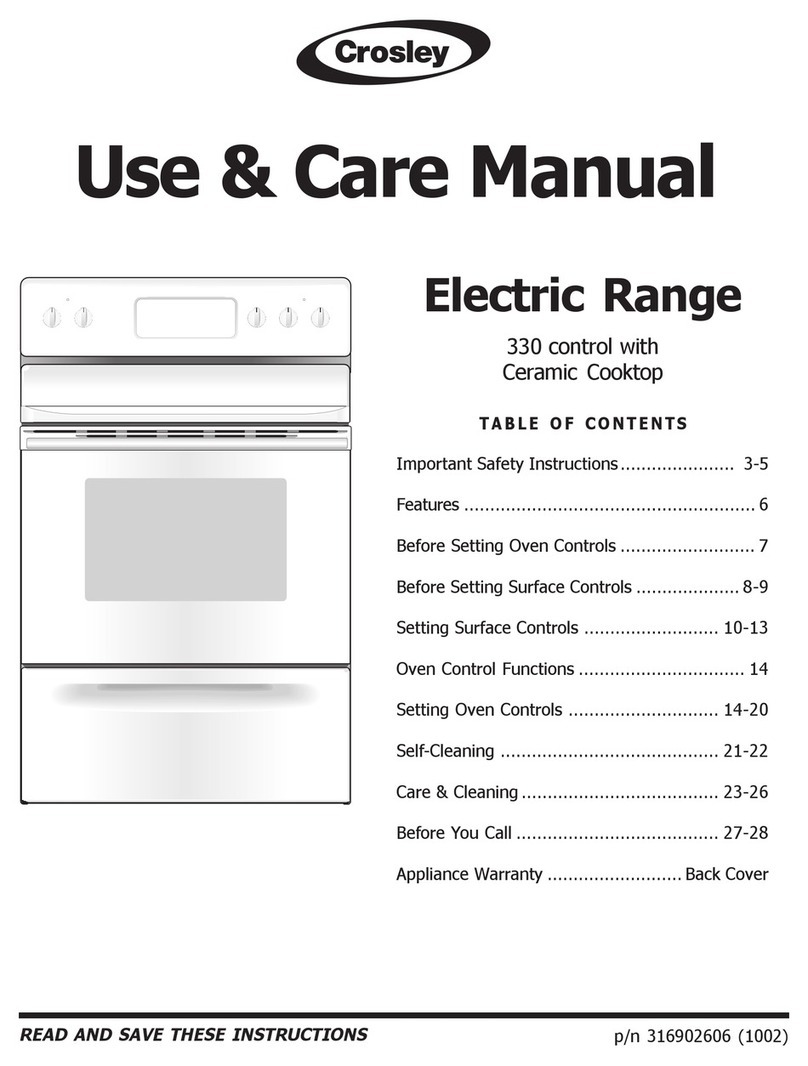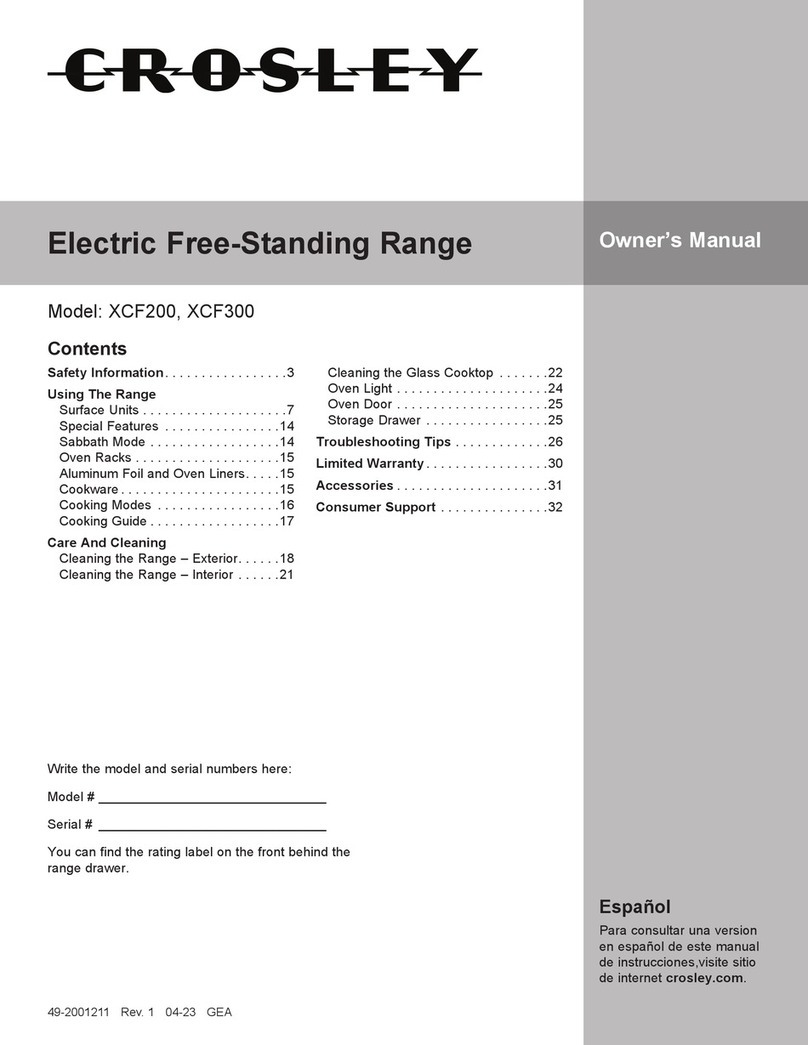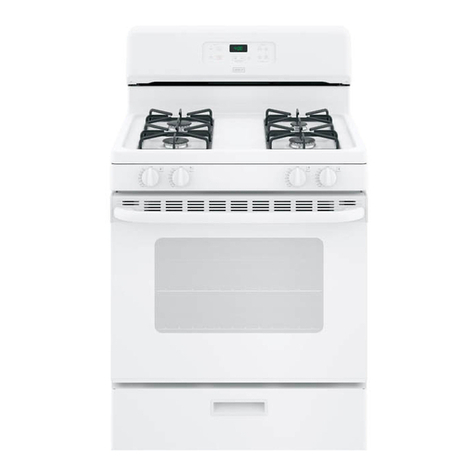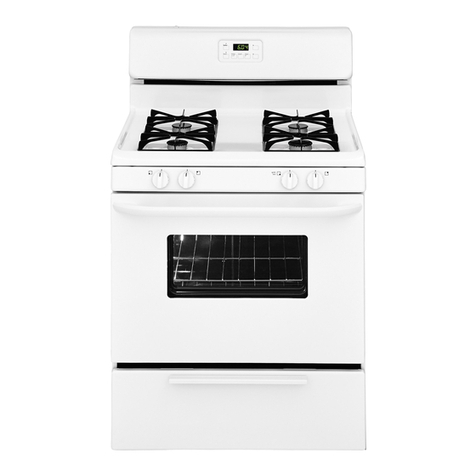
IMPORTANT INSTRUCTIONS FOR USING
YOUR COOKTOP
Use Proper Flame Size--Adjustflamesizesoitdoes
notextendbeyond theedge oftheutensil.The use of
undersizedutensilswillexposea portionoftheburner
flametodirectcontactand may resultinignitionof
clothing.Properrelationshipofutensiltoflamewillalso
improveefficiency.
• Know which knob controls each surface burner.
Place a pan of food on the burner before turning it on,
and turn the burner off before removing the pan.
•Always turn knob to the full LITE position when
ignitingtop burners,Visually check that burner has lit.
Then adjust the flame so it does not extend beyond the
edge of the utensil.
• Utensil handles should be turned inward and not
extend over adjacent surface burners--To reduce
the risk of burns, ignition of flammable materials, and
spillage due to unintentional contact with the utensil, the
handle of the utensil should be positioned so that it is
turned inward, and does not extend over adjacent
surface burners.
•Never leave surface burners unattended at high
heat settings--Boilovers cause smoking and greasy
spillovers that may ignite, or a pan that has boiled dry
may melt.
•Glazed cooking utensils--Only certain types of glass,
glass/ceramic, ceramic, earthenware, or other glazed
utensils are suitable for cook top service without breaking
due to the sudden change in temperature. Check the
manufacturer's recommendations for cook top use.
=When flaming foods under aventilating hood, turn
the fan on.
•Air curtain or other overhead range hoods, which
operate by blowing a downward air flow on to a range,
shall not be used in conjunction with gas ranges other
than when the hood and range have been designed,
tested and listed by an independent test laboratory for
use in combination with each other.
IMPORTANT INSTRUCTIONS FOR USING
YOUR OVEN
• Use care when opening oven door, warmer
drawer or lower oven door--Stand to the side of the
range when opening the door of a hot oven. Let hot air or
steam escape before you remove or replace food in the
oven.
Keep Oven Vent Ducts Unobstructed. The oven vent
is located below the backguard. Touching the surfaces in
this area when the oven is operating may cause severe
burns. Also, do not place plastic or heat-sensitive items
on or near the oven vent. These items could melt or
ignite.
Placement of Oven Racks. Always place oven racks in
desired location while oven is cool. If rack must be
moved while oven is hot use extreme caution. Use
potholders and grasp the rack with both hands to
reposition. Do not let potholders contact the hot heating
elements in the oven. Remove all utensils from the rack
before moving.
•Do not use the broiler pan without its insert, The
broiler pan and its insert allow dripping fat to drain and
be kept away from the high heat of the broiler.
=Do not cover the broiler insert with aluminum foil,
Exposed fat and grease could ignite,
Protective liners--Do not use aluminum foil to line the
oven bottom. Only use aluminum foil as recommended in
this manual. Improper installation of these liners may
result in risk of electric shock, or fire.
SELF=CLEANING OVENS
•Clean in the self=cleaning cycle only the parts
listed in this Use &Care Manual, Before self-cleaning
the oven, remove the broiler pan and any utensils or
foods from the oven.
•Do Not Use Oven Cleaners--No commercial oven
cleaner or oven liner protective coating of any kind should
be used in or around any part of the oven.
•Do Not Clean Door Gasket--The door gasket is
essential for a good seal. Care should be taken not to
rub, damage or move the gasket.
• The health of some birds is extremely sensitive to the
fumes given off during the self-cleaning cycle of any
range. Move birds to another well-ventilated room.

